Graphics Reference
In-Depth Information
quotient map, then (
Y
p) is a covering space for
Y
/G with G the group of covering
transformations.
Proof.
See [Mass67].
As a nice application of this discussion of covering transformations we relate this
to the lens spaces defined in Section 7.2.4. As before, let p and q be relatively prime
positive integers and assume that 0 £ q £ p/2. Consider the unit sphere
S
3
in complex
2-space
C
2
. (One can identify
C
2
with
R
4
.) Define rotations
3
3
s
i
:
SS
Æ
by
)
=
(
)
(
1
2
p
i p
2
p
qi p
s
zz
,
z
e
,
z
e
,
i
12
2
where
z
1
,
z
2
Œ
C
and i = 0, 1,..., p-1. (The e
2pi/p
are the pth roots of unity.) Since
s
i
=s
i
, we have in effect defined a group
=
{
}
G
ss
,
,...,
s
01
p
-
1
of order p of rotations acting on
S
3
. Define
(
)
=
S
3
Lpq
,
G
and let
S
3
Æ
(
)
h :
Lpq
,
be the quotient map.
7.4.2.25. Theorem.
The new spaces L(p,q) are homeomorphic to the lens spaces
L(p,q) defined in Section 7.2.4. Furthermore,
(1) (
S
3
,h) is the universal covering space for L(p,q).
(2) G = Cov(
S
3
,h).
Proof.
See [CooF67] or [HilW60]. Parts (1) and (2) are obvious.
7.4.2.26. Corollary.
p
1
(L(p,q)) ª
Z
p
.
This concludes our overview of the theory of covering spaces. The gist of the main
results stripped of their technical details is summarized by the following:
(1) The theory of covering spaces for simply connected spaces is uninteresting
because the only covering space in that case is where the space covers itself.
(2) The universal covering space of a space covers every other covering space of
the space.



